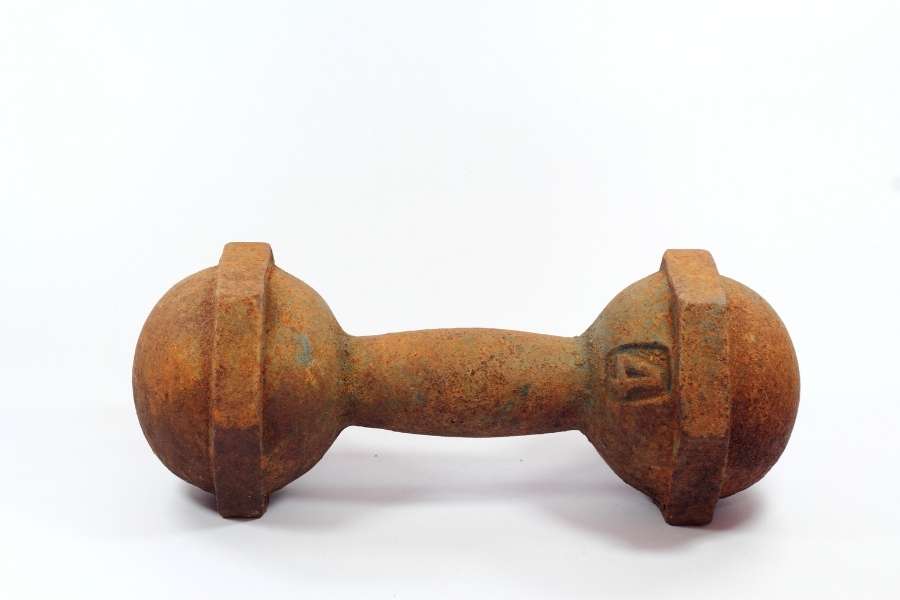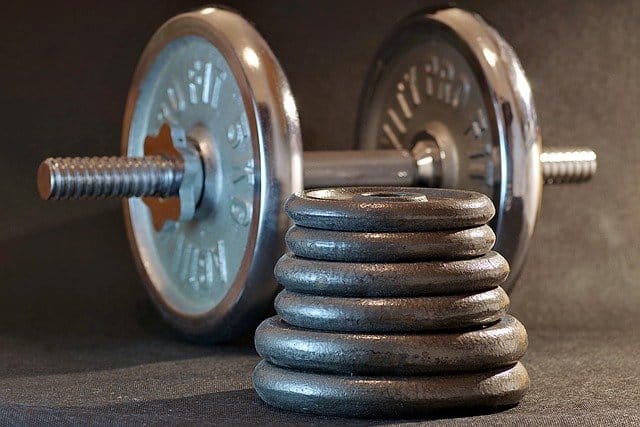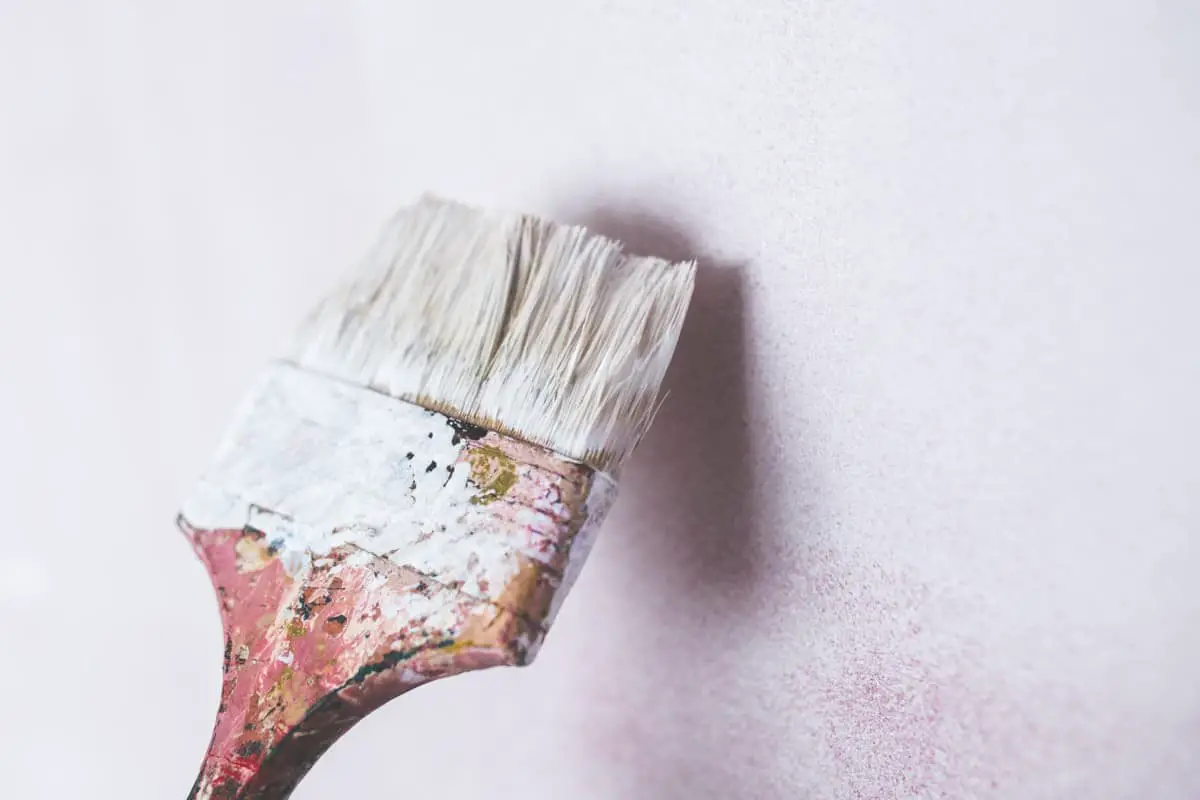Are you building a gym in your garage and are worried about corrosion? You’re right to do so. Here is what you can expect by putting gym equipment in your garage.
Gym equipment can rust in a garage under the right circumstances since garages are often not sealed and insulated as well as the rest of the house The biggest risk factors are high humidity and improper maintenance. Rust can be prevented with proper maintenance, ventilation and a dehumidifier.
To find all the risk factors and what you can do to prevent corrosion, keep reading.
Contents
How To Prevent Gym Equipment From Rusting

Below we’ll go into much greater detail on the causes why gym equipment rusts and what to do about it. But not everyone wants to read everything in detail so here is a short summary:
Gym equipment rusts because the metal surface isn’t covered with coatings that prevent corrosion. Humidity in the air and the sweat from your hands can cause rust to form, especially on barbells and dumbbells but other pieces of equipment are not immune.
To prevent rust forming on your gym equipment, you can do the following things;
Four outdoor gym equipment things are a little different. Click here for tips on preventing rust on outdoor gym equipment.
When Does Gym Equipment Corrode?
A quick overview of what can cause corrosion is a good idea to get an understanding of equipment corrosion in a garage gym. What causes something to rust?
You might also like: How to protect your outdoor gym equipment.
Rust is the result of a reaction called oxidation which is when iron reacts with water and oxygen to form hydrated iron oxide. Basically, the metal is disintegrating into its basic parts.
So when iron, moisture, and oxygen get together rust happens. But let’s look at the risk factors a bit more in-depth.
Looking for good equipment for a reasonable price? Click here to find what I recommend.

Will gym equipment rust in my garage gym?
As you can see above, there are quite a few factors that come into play in rust forming. Is your equipment at risk? Here are the biggest risk factors for your gym equipment corroding in the garage.
Climate
The biggest factor is going to be the climate where you live. Garages usually aren’t sealed very well and there is a big door that opens often. That means that what happens outside, will get inside pretty quickly.
So if you live in an area where it’s very humid parts of the year, getting rust on your equipment is certainly a risk.
Examples of climates with high humidity;
- Tropical region during rainy season
- Snowy area when the snow melts
Time of day also has an impact on the relative humidity but, since we’re talking about inside humidity, it will be a little smoothed out. To see if you’re in an area that’s at risk, just check the average humidity levels over a year. You can easily find that information online. If the average humidity is over 65% on average at certain times in the year, corrosion could occur.

Equipment choice for garage gyms
Some equipment is more resistant to corrosion than other. Often that’s not the result of a difference in metal but a difference in finish.
Get equipment with good finish from the factory. The original coat of paint is going to be the best protection against corrosion you can get.
Barbells come with many different finishes some of which are much better protection against corrosion than others.
Just want something that’s maintenance-free? Here are the best rust-free barbells.
Equipment maintenance in a garage
And that leads to the next risk factor; maintenance. You can buy the best equipment but once the protective paint wears off, it’s just as vulnerable as other equipment.
Lifting weights can cause paint to wear off over time and that’s perfectly normal. However, if you don’t keep up with the maintenance, it can lead to corrosion.
Cleaning
How clean you keep your garage and equipment is also important. Pollution and dust can make it easier for metal to rust. And leaving sweat all over your equipment can damage the paint, collect in cracks and crevices and cause problems. Cleaning regularly and wiping down the equipment helps keep everything nice and shiny.

Garage insulation and sealing
The biggest problem is moisture. If there is no moisture, you’ll likely have no to very little rust. Garages are often not the best insulated and sealed part of the house and in some cases moisture can get in relatively easily.
If that’s the case in your garage, that’s a big risk factor in getting rust on your gym equipment.
Ventilation
If moisture gets in but there is no way for it to get out, it will keep building up. Moisture doesn’t magically disappear although evaporation might look like that.
Ventilation can prevent the humidity from rising too high although at the same time that depends on the outside humidity. In most cases ventilation is a good thing though. So if your garage isn’t ventilated very well, that can cause extra corrosion.
Also, without proper ventilation the temperature can rise quite a bit which accelerates corrosion as well.
Read everything about home gym ventilation in this post.
Other activities in garage
Finally, the other activities in the garage can play a role. If you’re grinding metal and doing tons of DIY projects in the garage, it leaves a lot of dust and particles that can accelerate the corrosion process.
Parking a wet or snowy car inside will leave quite a lot of liquid that will drip onto the floor and possible make its way to your gym setup. Take a look at what you do in the garage and what impact that has on the possibility of getting rust on the equipment.
Conclusion
If your gym equipment is at risk of rusting in your garage really depends on your personal situation and location. Humidity and moisture are the biggest risk factors so make sure to check on those for your location and in your garage.
How to prevent equipment rusting in a garage gym
If your gym equipment is at risk of rusting in your garage, there are a few things you can do to prevent this. Most of them are pretty easy to do as well so there is no reason to not do these.

Prevention
Prevention is better than fixing but how can you prevent
Equipment choice: Pick equipment that’s well finished and has a good coat of durable paint from the factory.
Pay special attention to the barbell you choose. There are many different finishes available on barbells from bare metal to ceramic coatings to stainless steel. Stainless steel is the best choice but can be pricey. Ceramic or chrome coated barbells are also good choices that are very well protected against corrosion. Try to avoid bare metal unless you like to do a lot of maintenance.
Wipe down: Wipe down the equipment after every workout. This will prevent sweat from building up in certain spots. Sweat can easily cause corrosion but also damage paint and other surfaces so removing it is important. Make sure to get the rag you used to wipe down the surface out of the garage so you actually remove the moisture from the space. Wiping things down also removes dust and dirt from the surface.
Fix moisture issues: If there are any spots where water is getting into the garage, fixing them is going to help a lot. Fixing a leaking roof or improving weather stripping around the door might take some time and money but are also big improvements. It’s not only better for your equipment but also for the rest of your house.
Improve ventilation: Ventilation can keep humidity levels under control, lower the temperature and also make your garage a nicer place to work out in.
If there is no ventilation at all at the moment, installing a simple exhaust fan and air inlet will make a big difference.
Read everything about home gym ventilation in this post.
Dehumidifier: In some situations, improving ventilation isn’t going to do anything except pulling in more humidity from outside. In that case, a dehumidifier is a great option. It costs less energy than an A/C unit and is very effective at lowering the humidity in a space.
Running an A/C in the garage is generally not the most energy efficient although very effective in lowering the humidity and making the space more comfortable to work out in.
Maintenance: Stay on top of your equipment maintenance. Especially the paint. As soon as you see it’s starts chipping or wearing, take care of it. It might not look as good as the original coat but, it’s better than rust.
Oil: Barbells and the handles of dumbbells are often the first things to start rusting. That’s because those are the surfaces that get the most sweat on them and might not be the best protected to begin with. Picking a stainless steel barbell or chrome coated dumbbells will help a lot but not everyone has that luxury.
Clean dumbbell handles and barbells regularly. After cleaning, wipe them down with a little bit of WD-40 (amazon link). This creates a protective coating that keeps out moisture. This has to be done regularly to be effective though.
Storage: The barbells are probably the most susceptible to corrosion in a garage gym. So why not keep them inside the house. Barbells are easy to move around and put in a corner somewhere. It’s not a big deal to walk a few feet with a barbell in your hands and a small sacrifice to make for better longevity.
Fixes
Maybe you’re reading this and the dreaded rust has already shown up. What can you do now? There are two main steps you have to take; Remove the rust and protect the surface so it won’t come back.
Remove: Different surfaces have different rust removal methods that are preferable. For many situations a steel wire brush and sand paper is the right method. On other surfaces you might want to use chemical rust removers.
Protect: Surfaces that are supposed to be painted should be painted again, possibly with a rust prevention primer underneath. Bare metal surfaces like barbells can be oiled with some simple WD-40 (amazon link) to protect it.

What’s the problem with corrosion on gym equipment?
Why would you care if your equipment is rusty in the first place? Doesn’t it add some nice old school gym vibes to your garage?
Yes, it kind of does and if you like the look, go ahead and throw some water over your gym setup. There are a few drawbacks though;

